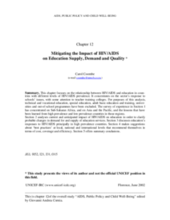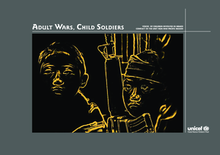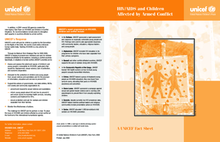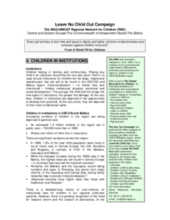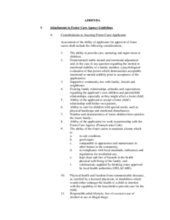Demographic Data
|
Sources: World Bank, UNICEF,UNDP HDR 2015, DHS 2014 |
Displaying 14031 - 14040 of 14333
Outlines the relationship between HIV/AIDS and education in order to clarify probable changes in demand for and supply of education services. Includes a discussion of responses and best practices.
A qualitative evaluation of child soldiering in the East Asia and Pacific region based on accounts of current and former child soldiers. Includes comprehensive guidelines for interviewing children about their experiences with child soldiering.
Outlines links between HIV/AIDS and armed conflict, with emphasis on their joint impacts on children. Summarizes key priorities for dealing with HIV/AIDS, children, and conflict.
This paper provides a guideline for the implementation of reunification and reintegration programs for agencies providing institutional care for orphans. It outlines the different strategies and activities an organization in Ethiopia used to transition from institutional care to community-based childcare projects.
This paper examines the negative impact of institutional care in central eastern Europe, the Commonwealth of Independent States and the Baltics region. It promotes community-based care alternatives and provides statistics. It also includes a list of useful resources addressing orphaned and vulnerable children.
A review of institutional care and family-centered care with a discussion of both positive and negative aspects of group care. This review paper is primarily focused on showing the inefficacy of group care and recommending other forms of care such as kinship care and even foster care as options that are more cost effective and better for children’s development.
This paper presents a study in Uganda on the effects of NGO interventions, and focuses on coping strategies in child-headed households (CHHs) and on community support systems.
Brief guidelines on assessing and training foster carers, and supporting children in foster care placements.
A report of an action research study done by Farm Orphan Support Trust of Zimbabwe (FOST), to learn about the problems of child-headed households on commercial farms in Mashonaland Central and Manicaland provinces. The report includes the problems indentified and some recommendations for interventions, such as integration of psycho-social support and provision of material needs.
Documents the nature of sexual abuse against girls in Zambia, why it continues to happen, and the links with HIV infection. Outlines policies for prevention and details what each relevant organization on the ground is doing (or not doing) to address the problem.

